#Takahashi Wakabayashi
Text
Pentagon Pursuit | Part 11 | Seven-Way Title Fight
#FM24 #PentagonPursuit Part 11: Seven-Way Title Fight. #J1League newcomers #AlbirexNiigata find themselves involved in a title fight with Japan's big boys. But can they secure continental qualification for the first time?
Read here:
Albirex Niigata were off to an absolute flyer in Robaato Rasamu’s first season of top-flight football. They found themselves 2nd in J1 League after 18 games but, with injuries and a heavy schedule stacking up, it would be a major challenge to maintain that form.
They were mid-way through a tough schedule of eight matches in 27 days through May, which continued against several teams in the top…
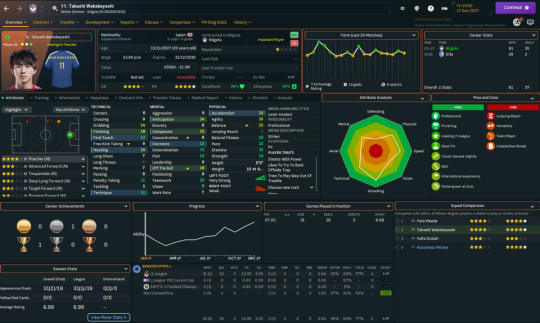
View On WordPress
#Declan Rice#FM24#Football Manager#Football Manager 2024#Football Manager 24#J1 League#Japan#Jarl-Emil Nesland#Kazumasa Moriya#Mitsuaki Hara#Naoki Hattori#Pentagon Challenge#Pentagon Pursuit#Ryutaro Ito#Takahashi Wakabayashi#Takashi Yamamoto#Vusi More#Yoshikazu Yoshida#Yuito Suzuki
0 notes
Audio
#The iDOLM@STER STARLIT SEASON#765PRO ALLSTARS#Haruka Amami#Eriko Nakamura#Chihaya Kisaragi#Asami Imai#Miki Hoshii#Akiko Hasegawa#Yukiho Hagiwara#Azumi Asakura#Yayoi Takatsuki#Mayako Nigo#Ritsuko Akizuki#Naomi Wakabayashi#Azusa Miura#Chiaki Takahashi#Iori Minase#Rie Kugimiya#Makoto Kikuchi#Hiromi Hirata#Ami Futami#Mami Futami#Asami Shimoda#Takane Shijou#Yumi Hara#Hibiki Ganaha#Manami Numakura#Nana Abe#Marie Miyake#Ranko Kanzaki
9 notes
·
View notes
Text

Happy birthday Genzo kun
13 notes
·
View notes
Text
#AO3 Link#FanFiction#AO3 Izuku#♠#Izuku Midoriya#Akari Adachi#Watanabe Wakabayashi#Takao Takahashi#R:M#A:Blob Babe 271
1 note
·
View note
Photo



Takahashi Kaito (King & Prince) x Shintaro (SixTONES)
TV Drama “Daga, Jyounetsu wa Aru!”
#takahashi kaito#king & prince#morimoto shintaro#SixTONES#jdrama#tv drama#wakabayashi masayasu#yamasato ryota#だが情熱はある#ストプリ
6 notes
·
View notes
Text
Spring 2024 anime, Pt. 2: Mixed bags and the gems
hey! i also post this on my ko-fi! this is very much a labor of love, so if you liked what i wrote consider throwing a few bucks my way! also you can find part 1 right here! thanks!
Yes, hello, I'm still here. Between work and AI: The Somnium Files -nirvanA Initiative-, I was struggling to find the time to get this out, but here we are! Now if you'll excuse me, I'm gonna go actually watch some anime again.
As always, the OP for each show is linked in the title. Watch them! There were some damn good ones this season.
Let's-a go:
Mixed Bags

Astro Note
I’m going to kick off this section by first stating that on the whole, I’m much higher on the anime in this section this season than I was last time: Nothing that I watched this season disappointed me nearly as much as Metallic Rouge or The Witch and the Beast, nor bored me to tears like The Unwanted Undead Adventurer. This truly is a collection of mixed bags; anime that I found enjoyable or interesting but still left me wanting in one way or another. “Good But Could Have Been Great” is too unwieldy anyway.
Astro Note was eye-catching from the jump: This is very clearly an homage to Rumiko Takahashi’s beloved romcom Maison Ikkoku, with character designs by Carole & Tuesday’s Eisaku Kubonouchi. The colors are soft and bright, everyone looks unique and has a wide variety of hilarious facial expressions, and the OP is a fun time right out of the gate. You come for the lovely visuals and Takahashi homage, and you stay for, uh, not much else.
Takumi, a down-on-his-luck young chef, answers a job posting at a boarding house that promises its residents breakfast every day. It turns out that Mira, the odd but beautiful new landlady, is a dogshit cook and tried to attract a new one with a plagiarized job posting. Takumi doesn’t really care because she’s, like, really pretty, so he takes the job and moves in. He’s soon beset by a cast of wacky characters that includes an enigmatic unemployed salaryman and his precocious son, an indie idol who looks like a hard-drinking Futaba Sakura in her downtime, a nosy neighbor, and a rich, handsome romantic rival. We’re already approaching Maison Ikkoku territory.
Shortly after moving in, Takumi believes he overhears Mira saying that she’s a widow, which would firmly plant Astro Note’s flag right in Ikkoku’s turf, but it turns out that Mira is in fact an alien from the planet Wid, meaning she is of the Wido race (this is as good of a localization as you can ask for; in the original Japanese he heard “miboujin,” not knowing that she’s from the planet Mibou). So we’ve got some Urusei Yasura sprinkled in for good measure. Her adorable poodle, voiced by Junichi Suwabe (Sukuna himself!) is from the same planet and helping her find a MacGuffin, hidden by the previous owner, that would help her take over as queen. There’s also some blossoming romance!
The alien stuff made for an interesting wrinkle, and it went a long way toward characterizing Mira as an endearingly odd but curious woman, but it often played out in wacky hijinks caused by alien spies, which felt like a designated make-the-plot-happen button more often than not. It paid off splendidly in the last couple of episodes, and I loved how all of the flashbacks of Mira’s mother looked like grainy Showa-era space operas, but getting there took a lot of “oh no, chase that Thing!” sequences. I found myself tuning out on those until they finally became plot relevant.
The central romance was fine, if a little underbaked, but what kept me watching Astro Note was the smaller moments with the ensemble characters. There were moments with both Wakabayashi the salaryman and his son Ren that slapped the apathy right off my face, and a side plot with Takumi and a person from his past was incredibly sweet. I did also love the massive turn the plot took in the last couple episodes, to the point where I found myself almost wishing that the show up to that point was different.
And that’s Astro Note in a nutshell: A lot of good pieces mixed with some filler, weird pacing, and an overall uneven experience in a nice-looking package. A fun little distraction but nothing entirely memorable. If I can give this show one major positive, it’s that watching it finally convinced me to read Maison Ikkoku, and for that I will forever be grateful. Read Maison Ikkoku.

Go! Go! Loser Ranger
I keep running notes for everything I’m watching as the season rolls on, and sometimes I’ll indulge in other reviewers’ early takes and jot down some insights that might spark from hearing outside perspectives. During Gigguk’s opening remarks on Go! Go! Loser Ranger in his early Spring season roundup, I made a note that the easiest way to summarize this show for a western audience is “basically The Boys but with the Power Rangers instead of The Seven.” And then he said pretty much the exact same thing five seconds later. I just want the record to show that.
Indeed, this is a sentai series with some spice. 13 years ago, the invading forces of evil were soundly defeated by the Dragon Keepers, a real-life sentai squad. In the present day, the Dragon Keepers now sit atop a massive organization protecting earth, and also dominating the entertainment industry: Every week, they hold an exhibition match against the remaining rank-and-file footsoldiers, skull-faced shapeshifters known as Dusters. In order to keep their lives, the Dusters were forced to give up their freedom and serve as the farcical Putty Patrol for what is ultimately a pro wrestling show. Sick of being a jobber and effectively a slave, one of the Dusters, known simply as Fighter D, decides the best way to destroy the Dragon Keepers and free his brethren is to do so from within: He’ll morph into a human shape, join their Rangers program as a cadet, and personally slay each of the five Keepers.
Fighter D is quickly found out, though. One of the recruiters, the lovely but mercurial Yumeko, isn’t nearly as dumb as he thought, but she fortunately has the same aim and quickly puts him to work trying to steal the Keepers’ insanely powerful weapons, the Divine Artifacts. He’s also found by the Dragon Keepers and manages to escape, though badly wounded. He’s found in a cave by Yumeko’s hanger-on, the upstart Ranger cadet Hibiki, whose family was badly fragmented by an unknown monster. While he still believes in the Keepers and shares their ostensible goal of protecting humanity, he believes that there needs to be major changes and agrees to let D impersonate him to infiltrate the Rangers. He’s soon embroiled in a prolonged examination trial against higher-ranked Rangers that soon turns into a fight to the death, made only more deadly by the inclusion of a female Duster and the same monster that killed Hibiki’s parents and paralyzed his sister.
Yes, that’s a lot, and everything up until that last sentence was just in the first four episodes. I’ve said repeatedly that I’m willing to be patient with introductory seasons for action-oriented shonen series, because those do usually take a minute to start cooking, but the first season of Loser Ranger is bizarrely paced. The first four episodes were an intriguing introduction, but they might have served better as a movie to kick off the season, because the overwhelming majority of the remaining eight episodes were pretty much just a bunch of people fighting in a fucking parking garage. I was under the impression that the first season was going to be 24 or so episodes, for some reason, so I was willing to be patient with it.
Maybe I should've been patient enough to wait until the second season, because I found myself getting whiplash between fascination and utter boredom. I still don’t know if I even like this show. There are so many moving parts, and many of them are fascinating, but to get bombarded with them so early and so often, only to then keep most of them in the background in favor of way too many new characters fighting in, again, a goddamned parking garage, frustrates me in increasing measure the more I write about it. I really wanted to like this show more than I did.
The production values are seemingly all over the place too. The OP is another Tatsuya Kitani banger, the voice cast is deep and talented (especially for the English dub, holy hell), the puppet outros are a hoot, and the animation is mostly fine. I’m rarely one to complain about CGI in anime (the ED for this show is entirely 3DCG and it fucks), but a lot of it in Loser Ranger, especially as an obvious means of cheaping out on having to hand-draw and -animate the Dragon Keepers’ slightly-elaborate costumes, is baffling. You could make a generous case for it representing them as larger-than-life personalities, but in execution it’s just kind of uncanny. The show looks and sounds fine overall, but little things like that just take me out of it.
I’m going to withhold judgment until the second season, but for now I can’t say I’m too impressed by the debut. Maybe just watch the first four episodes and put a pin in it until season 2 drops.

Jellyfish Can’t Swim in the Night
I’m beginning to worry that Metallic Rouge’s catastrophic narrative failure may have permanently made me nervous about any original anime to follow. It’s an unfair comparison to make, especially considering it aired at the same time as the bombastically audacious Bang Brave Bang Bravern, which I consider one of the best of the year so far and even one of the better anime to air so far this decade. At the same time, though, the millisecond I start to suspect that an original anime is losing its footing, as soon as the one synapse fires that tells me that this show may not be able to stick the landing, I start to get cynical. The good news is that Jellyfish Can’t Swim in the Night isn’t even in the same time zone as Rouge’s disappointment. The bad news is that it still never fully lived up to what it could have been.
Right from the jump, this felt like Doga Kobo flexing in between seasons of Oshi no Ko with yet another gorgeous showbiz anime. The debut episode is one of the best I’ve seen in some time; an immaculately animated and brilliantly storyboarded mission statement showcasing the self-doubting illustrator Mahiru and the disgraced ex-idol Kano meeting and finding new inspiration in one another’s work (if you’ve been reading Beat & Motion, this may sound familiar, except they’re both high school girls). It was a masterclass in depicting powerful self-expression and the spark of a truly fateful encounter. What followed was also pretty good, but...
Mahiru and Kano band together (pun intended) to form the multimedia collective JELEE, also enlisting social-outcast musical prodigy (and Kano stan) Mei, and NEET VTuber Kiui along the way. We see a lot of the nitty-gritty of trying to get a new act off the ground, as well as the reality that any new artist or creator nowadays is, ultimately, at the mercy of the internet. It was a treat to watch these four all come together, as was seeing the emotional bonds they forge with one another while also navigating their own personal issues, but it frequently came at the expense of an actual plot. That sort of thing is fine, I do love me some good slice-of-life, but I feel like the show planned on something a bit grander. While we’re focused on so many of these really lovely moments of character growth and interpersonal drama, everything about JELEE’s ascent, y’know, the main plot, just kind of happens, and before you know it everything turns out okay and the season’s over. It really felt like the writers had a big plan but ended up just laying down the tracks while the train was already in motion.
As mentioned, I’m not nearly as down on the anime in the “Mixed Bags” section this season as I was three months ago, but just thinking about how the plot sagged around the middle and rushed towards its ending leaves me frustrated. Unlike JELEE itself, Jellyfish Can’t Swim in the Night feels like less than the sum of its parts. This show feels like an unfinished jigsaw puzzle; what you can make out of the image is gorgeous, yet not only was it never completed, but someone clearly put a few of the pieces together wrong as well. There are plenty of themes in the story and character writing that could have blossomed into something amazing, like impostor syndrome, finding community and identity through fandom, young sapphic love, gender identity, and so many more, and it may have been possible to resolve at least a couple of these in 12 episodes, but Jellyfish seemed either incapable of or uninterested in actually getting there beyond a few vague overtures.
I know I sound harsh here and I didn’t mean for this review to be mostly complaints; I did very much like this show, but I wanted so badly to love it. And it probably isn’t entirely fair of me to grade this show based on what it could have been instead of what it is, but so much was plainly left on the table that I’m not really left with another choice. I still recommend it much more strongly than anything else I've put in the Mixed Bags section so far this year, but be forewarned that you may be let down. This is a pretty goddamn good anime that could’ve been pretty goddamn incredible, but it just couldn’t get there.

Mysterious Disappearances
I’ve said it before and I’ll say it again: I know what I’m about. If a new series rotates around a protagonist who looks like that, I’ll at least give it an episode or two.
Sumireko is a former child-prodigy novelist, now in her late 20s working at a bookstore with the sharp-tongued Ren, as she continues to fail at getting published again. On the eve of her 28th birthday, Sumireko accidentally takes home a book that was droplifted in the store, and shortly after reading it aloud she finds herself reverted into the body of a child. Suddenly struck by inspiration once again, she disappears from work for the next week, furiously typing away at her next novel. Ren manages to find her and tells her that she’s under a curse: The book is an otherworldly object known as a Curiosity, and its power can be deadly to those who use it. Though Sumireko is desperate to hang on to her newly-regained youth, Ren manages to smooth-talk her into changing back and handing over the book. Now aware of an extradimensional threat to daily life, Sumireko teams up with Ren and his little sister Oto to track down and neutralize more Curiosities before they cause widespread havoc.
This series is alright, if questionable in a lot of areas. I recognize that I’m not entirely the target audience; while I love a good supernatural mystery, each of these Curiosities is rooted in East Asian mythology and contemporary urban legends, very few of which I was familiar with going in. To those on that side of the world (or to Westerners with that specific special interest), I’m sure it hits different, but I got lost on a couple of occasions. Mysterious Disappearances also runs into the same pacing issues that I found with The Witch and the Beast last season, where the plot structure is effectively episodic, but each mystery can last a few episodes at a time, so if you’re not particularly invested in the subject at hand, you’re SOL for another week or two.
This show also just plain doesn’t look very good. The animation is nothing impressive and there’s something off-putting about the overall look that I can’t quite put my finger on. It looks retro in ways that probably weren’t intentional, like a 20-year-old digipaint anime that was upscaled from 480p. The audio element is great, at least; the music, sound design, and cast are all fantastic (between her turn as Sumireko in this one and her supporting roles in Reincarnated as the 7th Prince and Kaiju No. 8, Fairouz Ai has put in great work this season), and that’s a good thing because this one isn’t a looker.
If you couldn’t already tell from how the main character looks, Mysterious Disappearances is undoubtedly horny as hell, but often distractingly so. I do have to praise Sumireko’s design to an extent; for a large-chested anime lady, she at least hews closer to how a tall woman with somewhat appropriately large breasts would actually be built and how her clothes would actually fit. She looks like a more realistically-proportioned Nami. There’s no shortage of anime characters with gigantic boobs, but few that make me actually go “oh, this woman definitely has back problems.” There are a lot of slow-tilting shots up female characters’ legs towards their chests to the point where I tuned the dialogue out because I couldn’t believe they just kept on doing it. I skimmed through the manga, and though there is far more semi-gratuitous nudity as compared to the anime, I still somehow found the latter much more distracting with its attempts at fanservice. I also don’t really care for how the “camera” looks at Oto and her middle school classmates either; I found myself just getting nervous whenever a scene focused on them.
For its problems, there’s at least a series of solid emotional cores here. Similar to Sumireko’s desire to regain her youthful creativity, the wielders-slash-victims of these Curiosities are largely vulnerable individuals who are trying to make the best of their lives in spite of past traumas like bullying, neglect, and disability. All serious issues, no doubt, and the story tries to handle them as well as possible, but once you see through the pattern of “awful thing is happening, we get to know the character, then we learn their tragic backstory and there’s a tearful resolution while we move closer to advancing the overall plot,” it can feel a little cloying in the long run. Not that those resolutions can’t be potent; I really liked the endings of the stories of the missing hairdresser and the rogue VTuber, but as a plot formula it can ring hollow.
Mysterious Disappearances is a fine if unspectacular series of supernatural mysteries with an okay overarching plot, and your mileage may vary depending on your existing knowledge of East Asian occult and superstition. It’s also not that fun to actually look at, even if you happen to be into tall redheads with huge racks. Uh, not that I would know.
The Gems
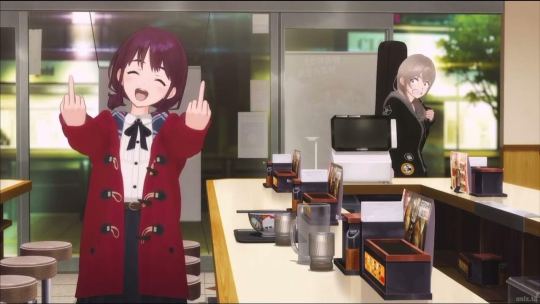
Girls Band Cry
When Bocchi the Rock! made its unexpectedly earth-shattering landfall a couple years ago, it was inundated with a deluge of comparisons to the previous landmark girls-in-a-band anime, K-On!. It felt a bit trite at the time, and feels even more so in retrospect; each show is its own thing and they both stand on their own merits. And now here’s my dumb ass, reviewing a new girls-in-a-band anime, desperately trying not to compare it to Bocchi.
It’s really not a fair comparison either way; the focus being on an all-girls rock band is really the only thing they have in common. Rather than Hitori “Bocchi” Gotoh, a perpetually-anxious recluse looking to join a band so she won’t have to get a real job after high school, we have Nina Iseri, who is… difficult. Nina has just moved to Tokyo after running away from home, but her train arrived too late for her to get her apartment key, and to make matters worse, her phone’s dead. While charging at a local coffee shop, she finds out that Momoka, the now-former frontwoman of her favorite band, is playing on a nearby street. After some ups and downs, they decide to form a band together, and butt heads more than a couple times.
Along the way, they recruit more members, each with their own issues: Subaru, the drummer, is struggling with the expectations placed on her by her grandmother to become an actress, Tomo, the keyboardist, is exacting and a little too opinionated to keep a steady role in a band, and Rupa, the bassist, is a soft-spoken foreigner who remains a cheerful enigma despite losing her parents. And Nina and Momoka are both flat-out stubborn in ways that do not mesh well with one another. There are a lot of yelling matches and many angry tears shed as the band Togenashi Togeari comes together: yes, the “Cry” in the title isn’t just for style points.
I will say that it’s refreshing that Girls Band Cry does not sugarcoat what an absolute pain in the ass Nina can be when she’s dug in: She ran away from home because she’s utterly convinced of her own righteousness, and it’s your damn problem if you think otherwise. She is avoidant and oppositional-defiant, and everyone else just has to deal with it. She may not pick her hills well, but by God will she die on them. Props for having a protagonist this openly messy and unpleasant. Plenty of musicians, or really anyone working in a group for that matter, can be abrasive and stubborn, and TogeToge’s growing pains are a necessary element of their development as a band.
I know the bar isn’t very high for 3D computer-generated anime when it doesn’t come from Studio Orange, but this is easily one of the best-looking 3DCG anime I’ve ever seen. Between this and Trigun Stampede, I’m blown away at how expressive characters can be in CG, and how they react to what’s around them in real-time more consistently than you’d see in most 2D animation. Speaking of which, Girls Band Cry isn’t entirely in 3D; much of the OP as well as several flashbacks and background characters are hand-drawn, and they look so goddamn good that I’m almost left wondering what could’ve been. Not that I’m disappointed in the slightest; when the 3D animation hits, it REALLY hits in gorgeous synaesthetic waves that so perfectly depict an intersection of sound, light, and emotion. Hell, even the transition cards are huge eye catchers. Not everything looks brilliant all the time; the pets in particular are uncannily low-res and almost look like they got plucked out of KamiKatsu.
Of course, this is a band show, so the audio element has to be on point as well, and I’d say Girls Band Cry is up to snuff. The anime is part of a larger multimedia project, and the entire main cast consists of audition winners performing under mononyms, and they knock it out of the damn park; they’re pretty goddamn great for supposed newcomers. The music is a blast as well, not just in performance scenes but in the background as well. Togenashi Togeari already existed in the zeitgeist as a virtual band before this show went to air, so they already had a small discography out there before the show went to air and I’m looking forward to digging into it.
Infamously, this show isn’t particularly easy to watch. Not in the thematic sense, but literally: You cannot legally watch it in English anywhere in the West. Despite its popularity, Girls Band Cry was never picked up by any Anglosphere-based streaming platforms, for whatever reason, and the only official English subtitles out there are from an Indonesian streamer. So, much like the days of VHS trading and the early internet, we’re forced to rely on community translations. Far be it from me to encourage piracy (lol), but if you can find a good fansub, Girls Band Cry is very much worth your while. Pinkies up, motherfuckers.

Kaiju No. 8
I don’t watch Demon Slayer or My Hero Academia, so this was my designated Shonen Jump action show of the season, and it came with a ton of buzz: The way I see it, if I can pick up a volume of the manga at Target, the inevitable anime adaptation is gonna be a big deal. I’ve not read Kaiju No. 8 yet, but I’d say the anime lives up to a good amount of the hype.
Japan has had to handle a constant threat of kaiju for many decades now, and as a child the way-too-aptly-named Kafka Hibino made a promise to his best friend Mina that they would both grow up to lead the Japan Anti-Kaiju Defense Force in charge of eliminating the threat. A couple decades later, she’s a national hero as a captain in the Force, while Kafka is in the private sector at age 32, cleaning up the enormous corpses and viscera Mina and her division leave behind. He hasn’t given up on his dreams, by any stretch; Kafka has failed every single enlistment application he’s submitted since he came of age, but he just keeps on trying.
Kafka and his work kohai, the upstart JAKDF hopeful Reno, manage to survive a kaiju attack at the end of a shift with minor injuries, but when they’re in the hospital, a potato-sized flying kaiju shoves itself down Kafka’s throat, causing him to transform into a kaiju. Fortunately, he’s able to change back to his human form just in time to pass the first round of Defense Force exams, with Reno warning him not to let anyone in on his secret during practical exams.
Kafka is pathetically weak in his human form and is repeatedly shown up by the daughter of the Defense Force’s director general, the young hotshot Kikoru (Fairouz Ai once again), but he manages to save her life when a training exercise goes haywire and forces him to transform and share his secret with her. Reno and Kikoru get in, no problem, while Kafka manages to squeak in as a cadet. Of course, without exposing his little-big kaiju secret, Kafka can’t do much to help in terms of actual combat, but he does frequently act as an unofficial tactician in directing his squadmates on the battlefield and, in a very smart writing decision, applying his professional knowledge of kaiju anatomy to help them identify and target weaknesses.
And from there we get a whole lot of early military training and bonding, and not just with Kafka, Reno, Kikoru, and their division’s vice-commander, the giggly Hoshina: There’s also, uh, Man-Bun! And Muscles! And Shark Teeth! And the Token Women! You know, those guys. Yeah, this is ostensibly an ensemble cast, as any good battle shonen should be, but I really didn’t get much from anyone outside the main few characters other than identifying features. I’m sure we’ll get more out of them in subsequent seasons but I have little to work off of right now.
The main three are great, though: Kafka definitely has shonen protag brain even at his age, but he’s still necessary representation for schlubby guys in their 30s who still have hopes and dreams (we exist and our stories matter), and for as serious and focused as Reno likes to think he is, he makes a great tsukkomi whenever Kafka starts acting up. Kikoru is already an icon as well; she’s basically Asuka Langley Sohryu for the zoomer generation. I feel a little weird about the fact that she’s literally half Kafka’s age and still acts kinda tsundere around him, but this is a shonen at the end of the day.
I have some small nagging issues with the story here and there, but nothing that outright ruins the show for me. Like plenty of others, I’m far more fascinated with the ins and outs of how Japanese society adapted to living with kaiju threats outside of just military preparation and response; Kafka’s initial job in kaiju cleanup was actually really neat and I’d have loved it just as much (and possibly more) if the series had just focused on that. I want some damn world building! I also am not crazy about the focus on the Defense Force’s powerscaling in the form of “Unleashed Combat Power,” but I also just plain don’t care about powerscaling to begin with. Wasn’t the entire point of power levels in Dragon Ball Z that it’s pointless to define someone’s fighting spirit by a number? Maybe they drop it later.
This show looks pretty darn good! Production IG clearly put its A-team on this one; the character animation is cartoonishly bouncy and expressive in ways we rarely see outside of Trigger productions, and the big-ass kaiju are all mercifully in outstanding 2D (though I wouldn’t complain about CG; the OP is entirely in 3D and looks exceptional). The silliness of the animation really came through in one of the funniest scenes in any anime I watched this season. Some of the textures can look a little distractingly muddy at times, but hey, these are big ugly monsters we’re looking at. Make those bastards ugly.
On a certain level, I can appreciate the effort put into this show to try to make it a crossover success; the manga is popular and kaiju films remain one of Japan’s greatest cultural exports. Streaming new episodes on the fetid corpse of Twitter was certainly a decision. I can also appreciate wanting to load up the soundtrack with popular Western artists; my problem is that they went with acts I actively avoid like YUNGBLUD (with writing by Imagine Dragons!) and OneRepublic. Suffice to say, I don’t care for the OP and ED on a musical level, but I know that I’m coming at this with a conscious bias. I’m sure they’re hits over in Japan, and for all I know there are music fans over there with the same tastes and disposition as me who think that some Japanese acts I learned about through anime like, say, Bump of Chicken or Queen Bee, are “coworker music” or whatever. I’ll live.
Kaiju No. 8, at the end of the day, is another battle shonen with guns and big monsters, but sometimes that’s all you need. I’ll be coming back for the next season.

Train to the End of the World
Spring 2024 was a banner season for girls anime. From the veteran director/writer duo that gave us cult hits like Squid Girl, Shirobako, and Prison School (and individual credits on a laundry list of classic and cult-favorite anime across the board) comes an original anime that’s not quite Cute Girls Doing Cute Things, nor Cute Girls Doing Amazing Things, but Cute Girls Being Fucking Weirdos in a Weird World.
7G technology has arrived in Japan and immediately wreaked unknowable chaos. Geography, flora, and fauna have all warped beyond recognition, and in the town of Agano, every human above a certain age has become a talking animal. Shizuru, a still-human high school girl, has been looking for her best friend Youka ever since they got in a fight two years ago and the latter ran off, just before the 7G cataclysm. She finds out that Youka has been spotted in Ikebukuro, and with the help of a babbling train conductor who managed to briefly turn lucid, learns to operate a two-car commuter train to get the hell out of dodge. Just before Shizuru leaves, train stocked with Agano’s famous goya melons, she’s joined by her classmates: The soft-spoken Nadeko, the temperamental bookworm Akira, and the rambunctious gyaru Reimi. Youka’s dog, Pochi, also joins for morale purposes. Along the way, they see just how warped Japan has become, with locals in the various towns ranging from mushroom people to zombies to Lilliputians to characters from their favorite anime, and more.
Try as I might, a summary does not do Train to the End of the World justice; this show is as offbeat as offbeat gets. It makes no bones about how flat-out weird it wants to get and actively revels in it. It’s not really interested in making the girls into a new generation of moe icons either; they are unabashed weirdos, in the ways that really only high school girls can be, and they handle the bizarre situations foisted upon them in similar fashion. They get into arguments about dumb shit, hurl insults at strangers, and occasionally just talk about poop. The writing in this series is fascinating, and it really shouldn’t come as a surprise coming from someone who also has script-writing credits for classics like Cowboy Bebop and Ranma ½ on her resume. The dialogue is punchy and comes at a breakneck pace in ways that you really only get in original anime like ODDTAXI.
Train to the End of the World is an incredible dichotomy unto itself because it clearly comes from a very literate way of thinking but has a blast being really goddamn stupid sometimes, in the best ways. It draws on a lot of inspirations of the epics of yore, gleefully cites the western literary canon, and ponders the future of the human race, and then has the girls negotiate their release from a Gulliver’s Travels situation by threatening to flood a park with urine. It is at once Homer and Homer Simpson. This show is funny in ways that are hard to articulate; comedy is so intrinsic to the show that it only has so many laugh-out-loud moments, but much more often I found myself shaking my head and remarking “this show is fucking hilarious.”
As a complete story, Train to the End of the World isn’t exactly generation-defining, but that’s perfectly fine. It’s an experience more than anything. It has really nice character moments and some heartwarming stuff in there, but I was mostly there for the weird shit. The ending was just okay, but I didn’t feel any poorer for having seen it; I’ll dive right into the cliche and say that it wasn’t about the destination but rather the journey. I had an absolute blast for the whole ride.
Now that I’ve made you read all of this, I’m going to go ahead and admit that I haven’t seen Squid Girl, Shirobako, or Prison School, but I kind of have to now, because I was bowled over by this show. This series revels in surrealism, so your mileage may vary, but it’s at the very least worth checking out. It may not have a lasting impact outside of some similar cult favoritism, but this was still my personal favorite new anime of the season.

Wind Breaker
A few weeks into the Spring season I felt like I was missing something. I gave Wind Breaker a shot and I realized about halfway into the first episode that what I was missing was just some dope-ass fisticuffs.
Haruka is a bit of a delinquent. His hair and eyes are heterochromic, and because he’s judged so harshly for his looks, he decided to lean into it and become the nogoodnik everyone thinks he is. He’s moved to a new town to join the local high school Furin, where he hears he’ll have to fight his way to the top, but as soon as he arrives in town he sees a young woman being harassed by a group of creeps. He takes them out on his own and in return receives a free lunch from the cafe she runs despite his protestations. After she teases him more than a little (his ass is NOT used to positive attention), the creeps return with more goons in tow, and Haruka is backed up by his new classmates. To his surprise, the locals shower the Furin boys with praise, and he then learns that Furin’s gang, Bofurin, exists solely to protect the town from outside threats. And Haruka thinks that is the coolest shit ever.
From there, Haruka gets to meet more of the Bofurin boys, and because of his standoffish personality, rebuffs their praises from the fight. Again, his ass is NOT used to positive attention. We get to learn the hierarchy of Bofurin, and it’s not exactly as Haruka expected: This is not a might-makes-right dogpile at all; it is a structured organization that protects its own and puts its community first. Soon enough, though, they happen upon one of their middle schoolers being hassled by a neighboring gang, and they organize a tournament on hostile ground to resolve their differences.
I am an absolute goddamn sucker for the “delinquent with a heart of gold” archetype, and Haruka is just a big ol’ tsundere from the opening minutes, so Wind Breaker hit like fucking catnip for me. For a show about gangs of delinquents, this could actually be a good example of positive masculinity if you look at it in a certain light. It’s very heavy-handed with the message that nobody can achieve greatness on their own and that surrounding yourself with the right people can change your life for the better. It’s not a rare theme in Japanese media by any means (it’s a central theme of the Persona series as well as another ultra-popular shonen series I’ve been reading in secret), but I really appreciate it being delivered through the lens of channeling brute strength and fighting prowess specifically to protect the vulnerable.
At the end of the day, though, it’s really just about guys bein’ dudes.
The production values on this are phenomenal and I have to commend CloverWorks for turning in yet another banger. The cast is deep and plenty talented (there’s a lot of Jujutsu Kaisen in there, and it should surprise nobody that the goofy, silver-haired leader of Bofurin is voiced by Yuichi Nakamura). The animation, shot composition, fight choreography, and lighting effects are all absolutely gorgeous, and it’s clear that they see this as a potential franchise. At least, I would certainly hope so, because what we actually got from the first season left me a little hungry. The tournament arc was juicy, and it went a lot longer toward introducing the ensemble cast than the two other action shows I just talked about, but it lasted about an episode too long for a 13-episode season, and the ending came at an awkward time. I was left wanting, but what I want is a second season, so I guess it did its job.
The issues with pacing and the weirdly-timed ending meant that Wind Breaker was a bit of a fence case for me between this section and the last, but my memories of watching it are almost uniformly positive, so into The Gems it goes. This show rocks. Dudes rock.
62 notes
·
View notes
Text
welcome to ATUS, Academy of The United Souls
this is info about this one Captain Tsubasa: kid's dream AU that I have made in my head; called "傷だらけ の 愛 / Kizudarake No Ai - A love full of scars".
Where it happens is a magical school located on the foothills on mount. Fuji, being so-called "starting source of all magic on earth."
Around 1500 years ago, there were five spirits living here that created and protected life on Earth, and led it toward harmony, peace and unity: water, fire, nature, light, and...?
Yes, Darkness. after a long and power-draining battle between them, the dark spirit of the underworld decided to join the four others in spreading balance between all living beings on the planet.
But the era of Peace was short, as around 500 years later, monsters of unknown origin merged from the newly-formed caves around the mountain, causing massive destructions and terror. They crushed the plants under their feet, devoured animals and humans and dried out the waters; even the sunlight was blocked out by their enormous figures—as much as they seemed like one of the darkness spirit's creations, she hadn't done anything at all.
So, the 5 spirits decided to hide. they transferred their divinity and magic into five different gemstones, and transformed themselves into mortal humans under disguise, so the Monsters wouldn't recognize or have any value for them to kill them.
After the attack of the monsters calmed down and they disappeared Without a Trace just as how they appeared, the five "spirit-humans" who couldn't turn back to their divine selves anymore, decided to find a way of transferring magic to the Next Generations, so it could still live on even if they died. Therefore, they created a highschool, and named it "Academy of the United Souls".
Each of them formed a house, inspiring the name from the greek god of their representing element, and the emblems from their own animal companions.
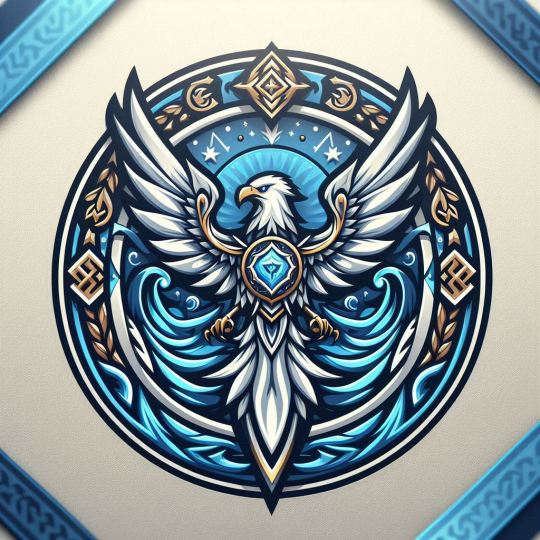
POSIDRYIA — ◇
ELEMENT: water
GEMSTONE: aquamrine
ANIMAL: falcon
KNOWN MEMBERS: Tsubasa Ozora (leader), Taro Misaki, Ryo Ishizaki, Sanae Nakazawa, Asahi Fujimura
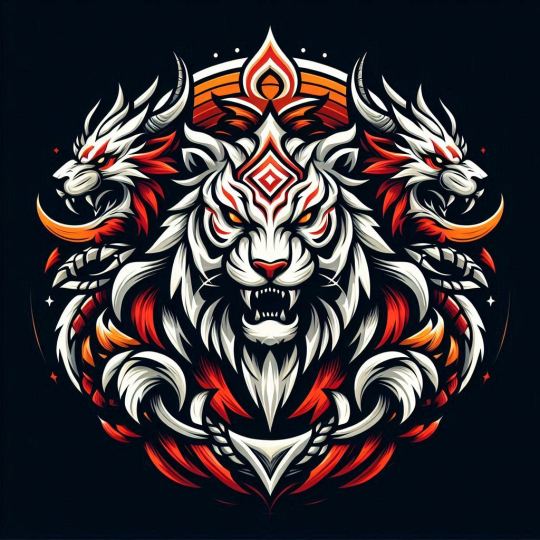
HEPHAESTE — ♧
ELEMENT: fire
GEMSTONE: ruby
ANIMAL: tiger
KNOWN MEMBERS: Kojiro Hyuga (leader), Ken Wakashimazu, Takeshi Sawada, Akane Shimizu, Yami Fujimura

DEMETHARA — ♤
ELEMENT: nature
GEMSTONE: peridot
ANIMAL: dog
KNOWN MEMBERS: Genzo Wakabayashi (leader), Mamoru Izawa, Hajime Taki, Teppei Kisugi
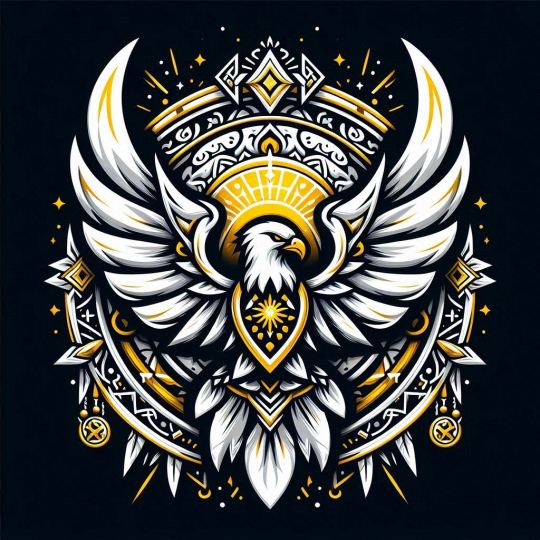
APOLLENOS — ☆
ELEMENT: light
GEMSTONE: citrine
ANIMAL: eagle
KNOWN MEMBERS: Hikaru Matsuyama (leader), Yoshiko Fujisawa, Kaito Miura

ERONYX — ♡
ELEMENT: Darkness
GEMSTONE: Amethyst
ANIMAL: Snake
KNOWN MEMBERS: Jun Misugi (Leader), Yayoi Aoba, Kuro Yamada
Additional info:
The first year students will gain their elements, second years can obtain a weapon, and third years are gifted with a special ability (stopping time, superhuman strength, etc).
a new leader for each house will be chosen in the end of each year, from the 2nd years that have the same element as the house representative.
Weapons are similar to ones of genshin impact's (Bow, sword, ploearm, claymore and catalytic powers)
I will make a series of polls regarding the name, gender, house and element of the main character(reader!) As the story will go on.
I will write parts of the story in different posts and link them together for a chapter. Don't expect the whole book in one night XD!
Ask for more information! That was all, bye!
(Captain Tsubasa is made by yoichi takahashi. this is just a fanmade AU including a couple of OCs and a mc (you).)
#キャプテン翼#captain tsubasa#tsubasa ozora#taro misaki#ryo ishizaki#sanae nakazawa#kojiro hyuga#takeshi sawada#ken wakashimazu#hikaru matsuyama#yoshiko fujisawa#genzo wakabayashi#mamoru izawa#teppei kisugi#hajime taki#jun misugi#yayoi aoba#fanfic AU#original character#reader insert
15 notes
·
View notes
Text
Astro Note Episode 1 Review - Romcom With Aliens
Everyone’s going “This is like Maison Ikkoku”, but I don’t know what that is. I looked it up and it’s one of Rumiko Takahashi’s works with a similar premise. Is it fun? Please let me know. Anyways, I’m always someone who has to watch something weird every season and this seems to be that ‘weird’ anime.
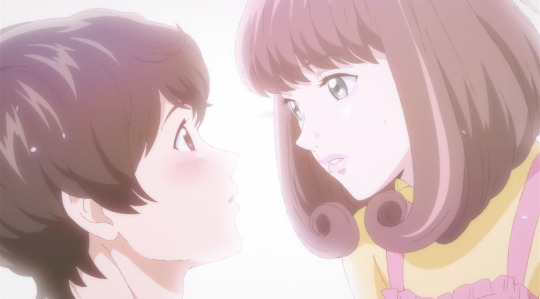
Why is it weird? The story starts off with a space chase as someone in a spaceship escapes from a bigger spaceship and lands in Japan. Then the story transitions to the “alien” already settling on Earth and is landlady of Astro Lodge where the main character Takumi Miyasaka is looking to work at. Unfortunately, the landlady, Mira Gotokuji, actually put in wrong information about the place. Astro Lodge was stated to be a restaurant in the job description, but it’s actually a share house that serves breakfast, but the landlady is looking for a chef because her cooking is catastrophic and her tenants want food because they were promised so. After Takumi shows off his cooking skills, Mira apologizes for the mess up, but he decides to move into Astro Lodge because he wants to cook and because he developed an instant crush on Mira the moment he laid eyes on her. What Takumi doesn’t know is that she’s actually an alien looking for a key and her protective poodle Naosuke is also an alien. All he knows is that she might be a widow and his chances to be with her might be harder than he’d expect.
The premise is pretty simple. It’s like a romcom and slice of life mixed with sci-fi in a way. Since it’s anime original, how the story will go is to be determined. Right now, I think I’m liking what I’m seeing so far. Other than Takumi, everyone in the share house seems to have their own secrets. Mira and Naosuke are aliens and Matsubara is an underground idol. Yamashita is stated to be a novelist, but nothing shows up when searching him. There must be a catch; Takumi predicts that he might be using a pen name, and I think so too, but I think that he might be writing erotic novels. Heck, I think Mr. Wakabayashi is the most suspicious of the bunch. He may not be an alien, but it’s weird how he’s unemployed but still wears a suit, pays his rent and affords an education to let his son Ren go to school. I guess the characters’ real identities will be revealed as the show keeps going.
To be honest, the animation is pretty average. It’s not great, but it’s not bad either. The funny faces are hilarious and the food porn looks great, but other than that, it’s pretty simplistic. The soundtracks not that memorable either. The opening and ending songs were great and the insert song of Maaya Uchida and Soma Saito singing during Mira and Takumi’s outing was nice; Terurun’s song was nice too. The songs without vocals aren’t that memorable, honestly.
The voice acting cast is actually the strongest in this anime. It’s an all-star cast with Soma Saito and Maaya Uchida as the leads. They fit the characters well and I love how Soma Saito screams so loudly during the scene where Naosuke bites his head. The supporting cast consists of Shinichiro Miki as Yamashita, Tomokazu Sugita as Mr. Wakabayashi, Rie Kugimiya as Ren Wakabayashi and Junichi Suwabe as Naosuke. Such a solid cast and they’re all amazing at comedy, so I’m not too worried about their performance because they will always do a solid job. I am not familiar with Ai Furihata, who voices Matsubara, but given that she voices a Love Live character, her singing skills are good. I quite like her singing voice a lot. The way her voice lowers during funny scenes was nice to hear too!
I’m liking what I’m seeing so far. I just hope that the story stays consistent. I’ll be tuning in next week to see what will happen to Takumi. What are your thoughts on this episode?
#astro note#Takumi miyasaka#mira gotokuji#naosuke#shokichi yamashita#Tomihiro wakabayashi#ren wakabayashi#Teruko matsubara#terurun#review#anime#anime review#ecargmura#arum journal
4 notes
·
View notes
Audio
Dance Dance Dance
Chihaya Kisaragi (CV: Asami Imai), Ritsuko Akizuki (CV: Naomi Wakabayashi), Azusa Miura (CV: Chiaki Takahashi), Takane Shijou (CV: Yumi Hara), Ranko Kanzaki (CV: Maaya Uchida), Kaede Takagaki (CV: Saori Hayami), Shizuka Mogami (CV: Azusa Tadokoro), Tsumugi Shiraishi (CV: Saki Minami), Sakuya Shirase (CV: Anna Yamaki), Rinze Morino (CV: Wakana Maruoka), Kohaku Okuzora (CV: Aimi Tanaka), Leon (CV: Minori Chihara).
#the idolm@ster#starlit season#chihaya kisaragi#ritsuko akizuki#azusa miura#takane shijou#ranko kanzaki#kaede takagaki#shizuka mogami#tsumugi shiraishi#sakuya shirase#rinze morino#kohaku okuzora#leon
20 notes
·
View notes
Video
youtube
THE IDOLM@STER M@STERS OF IDOL WORLD!!!!! 2023
Information regarding the MOIW 2023 live has been revealed! The live will occur in the TOKYO DOME on the 11th and 12th of February 2023. This live will feature all five brands of IDOLM@STER on the stage together after 8 years.
The voice providers participating in this stop are as follows:
DAY 1&2
IDOLM@STER 765PRO ALL STARS
Eriko Nakamura (Haruka Amami), Asami Imai (Chihaya Kisaragi), Akiko Hasegawa (Miki Hoshii), Azumi Asakura (Yukiho Hagiwara), Mayako Nigo (Yayoi Takatsuki), Hiromi Hirata (Makoto Kikuchi), Naomi Wakabayashi (Ritsuko Akizuki), Asami Shimoda (Ami/Mami Futami), Manami Numakura (Hibiki Ganaha), Rie Kugimiya (Iori Minase)
DAY 1 ONLY
IDOLM@STER CINDERELLA GIRLS
Triad Primus [Ayaka Fukuhara (Rin Shibuya), Eriko Matsui (Nao Kamiya), Mai Fuchigami (Karen Hojo)], Eldritch Loreteller [Haruka Chisuga (Ryo Matsunaga), Chiyo Ousaki (Koume Shirasaka)], Cyber Glass [Mina Nagashima (Haruna Kamijo), Rui Tanabe (Hina Araki)], Foreign Seaside [Nao Toyama (Mizuki Kawashima), Miharu Hanai (Tomoe Murakami)], from U149 [Asaka Imai (Chie Sasaki), Tomoyo Kurosawa (Miria Akagi), Hana Tamegai (Risa Matoba)]
IDOLM@STER MILLION LIVE
Strawberry Pop Moon [Haruka Yamazaki (Mirai Kasuga), Azusa Tadokoro (Shizuka Mogami), Machico (Tsubasa Ibuki)], TIntMe! [Eri Inagawa (Tamaki Ogami), Akari Harashima (Iku Nakatani), Keiko Watanabe (Momoko Suou)], HanaSakuya [Yuu Kahara (Emily Stewart), Saki Minami (Tsumugi Shiraishi), Kotori Koiwai (Tomoka Tenkubashi)], Cleasky [Asuka Kakumoto (Elena Shimabara), Chouchou Kiritani (Miya Miyao)]
IDOLM@STER SideM
DRAMATIC STARS [Shugo Nakamura (Teru Tendo)], Jupiter [Takuma Terashima (Toma Amagase), Daichi Kanbara (Hokuto Ijuin)], Beit [Shun Horie (Pierre), Tomohito Takatsuka (Minori Watanabe)], MofuMofuEn [Shogo Yano (Nao Okamura), Keisuke Furuhata (Shiro Tachibana)], C.FIRST [Yuri Ise (Shu Amamine), Masaya Miyakaze (Momohito Hanazono), Takeo Otsuka (Eishin Mayumi)]
IDOLM@STER SHINY COLORS
Hokago Climax Girls [Hiyori Konno (Kaho Komiya), Haruka Shiraishi (Chiyoko Sonoda), Mariko Nagai (Juri Saijo), Wakana Maruoka (Rinze Morino), Akiho Suzumoto (Natsuha Arisugawa)], Straylight [Yuki Tanaka (Asahi Serizawa), Eri Yukimura (Fuyuko Mayuzumi), Sayaka Kitahara (Mei Izumi)], noctchill [Yuu Wakui (Toru Asakura), Rio Tsuchiya (Madoka Higuchi), Saran Tajima (Koito Fukumaru), Miho Okasaki (Hinana Ichikawa)]
DAY 2 ONLY
IDOLM@STER CINDERELLA GIRLS
Threat Sign [Sayuri Hara (Mio Honda), Makoto Koichi (Haru Yuuki), Teru Ikuta (Natalia)], Dimension-3 [Kotomi Aihara (Shiki Ichinose), Shiki Aoki (Asuka Ninomiya)], flamme martini [Maki Kawase (Tsukasa Kiryu), Sayaka Harada (Miyu Mifune), Satsumi Matsuda (Syoko Hoshi), Minori Suzuki (Hajime Fujiwara)], HappyHappyTwin [Hiromi Igarashi (Anzu Futaba), Rei Matsuzaki (Kirari Moroboshi)], miroir [Hina Tachibana (Nagi Hisakawa), Rika Nagae (Hayate Hisakawa)]
IDOLM@STER MILLION LIVE
Chrono-Lexica [Yuka Saito (Subaru Nagayoshi), Atsuki Nakamura (Roco Handa), Rika Abe (Mizuki Makabe)], Senkou☆HANABIDAN [Yuri Komagata (Sayoko Takayam), Nana Hamasaki (Noriko Fukuda), Yui Watanabe (Nao Yokoyama), Eri Ozeki (Minako Satake)], 4 Luxury [Arisa Kori (Kaori Sakuramori), Rie Suegara (Fuka Toyokawa), Emi Hirayama (Reika Kitakami), Minami Takahashi (Konomi Baba)]
IDOLM@STER SideM
FRAME [Kentaro Kumagai (Hideo Akuno), Kento Hama (Ryu Kimura), Takuya Masumoto (Seiji Shingen)], Café Parade [Sho Karino (Yukihiro Kamiya), Takuya Kodama (Makio Uzuki), Daiki Kobayashi (Saki Mizushima)], F-LAGS [Yuko Sanpei (Ryo Akizuki), Shunya Hiruma (Kazuki Tsukumo), Takehiro Urao (Daigo Kabuto)]
IDOLM@STER SHINY COLORS
Illumination Stars [Hitomi Sekine (Mano Sakuragi), Mayu Mineda (Meguru Hachimiya)], L’Antica [Karin Isobe (Kogane Tsukioka), Chisa Suginuma (Mamimi Tanaka), Anna Yamaki (Sakuya Shirase), Shio Watanabe (Yuika Mitsumine), Yuina Mizuki (Kiriko Yukoku)], ALSTROEMERIA [Honoka Kuroki (Amana Osaki), Ryoko Maekawa (Tenka Osaki), Noriko Shibasaki (Chiyuki Kuwayama)], SHHis [Azusa Shizuki (Nichika Nanakusa), Aya Yamane (Mikoto Aketa)]
SPECIAL GUEST
ZWEIGLANZ [Minori Chihara (Leon), Rie Takahashi (Shika)]
23 notes
·
View notes
Text
BALITANG SPORTS: Japanese Manga Creator 'Captain Tsubasa' ends serialization for more than 4 decades, adapting before the TV Anime

TOKYO, JAPAN -- It is with great saddened development as Mr. Youichi Takahashi, the unfortunate and beloved Japanese creator of Captain Tsubasa, announcing the end of the manga's serialization after an incredible journey for 43 years. Within the few days after the new year of 2024, the upsetting decision has finally been made due to the author's ongoing health issues in relation to aging, forcing to end of an era for fans of this most beloved sports manga series.
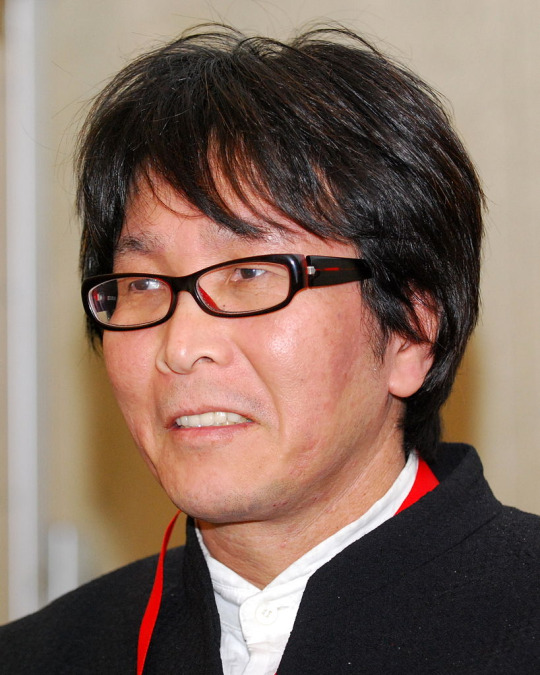
(FILE PHOTO COURTESY: Niccolò Caranti via Wikipedia PHOTO)
It was created by Mr. Takahashi in the late-March 1981, burst onto the scene and instantly captivated manga readers with its thrilling depiction of soccer and the incredible journey of its main fictional anime character, Capt. Oozora Tsubasa. The manga's gripping storytelling and exciting soccer matches received immense praise, paving the way for its transformation into a hugely popular TV anime series during the 1980s. The franchise's enduring popularity led to a modern sports anime reboot in April 2018, reigniting the passion of both longtime fans and a new generation of the Japanese viewers (which later expanded into a global scene in the online world).
As reported exclusively from a Japanese national newspaper outlet 'The Asahi Shimbum', his decision is to retire from serializing 'Captain Tsubasa' stems from his health condition, which has impacted his ability to continue creating new chapters of the iconic manga. The author's dedication to his craft has been evident throughout his career, but the toll on his health has necessitated this difficult decision to bring the manga to a close. Takahashi's contributions to the realm of manga and sports entertainment have garnered immense full support and effort of appreciation from both fans and colleagues at Weekly Shonen Jump.
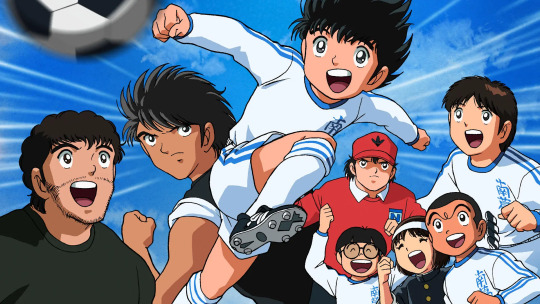
(FILE PHOTO COURTESY for REPRESENTATION: Google Images / from mountain left to the right: Roberto Hongo, Hyuga Kojiro, Oozora Tsubasa, Genzo Wakabayashi, unnamed supporting fictional anime character, Sanae a.k.a. Anego, Ishizaki Ryo and Misaki Taro)
Looking a bright future ahead, the retirement of Takahashi has sparked a lot of curiosity about the future of Captain Tsubasa. Even though the manga has come to an end, the beloved soccer franchise readies to start a new chapter with the highly anticipated final season of the aforementioned TV anime series. This season is scheduled to air on JOTX-TV 7's TV Tokyo and other affiliates of the TXN Network across Japan. Fans are eagerly waiting to see Oozora Tsubasa's soccer journey reach its climax on screen.
With the departure of its original manga creator before the anime scene, the Captain Tsubasa saga is getting ready to say goodbye. However, the remarkable influence of Mr. Takahashi's masterpiece continues on to captivate people all over the globe. The impact of 'Captain Tsubasa' on sports anime and manga culture cannot be measured, and although the manga's conclusion signifies the end of an era, it also symbolizes the everlasting spirit of Oozora Tsubasa, and the unforgettable impression he has made on the hearts of anime sports enthusiasts.
FILE PHOTO COURTESY for REPRESENTATION: JPanime via EBay
BACKGROUND PROVIDED BY: Tegna
SOURCE:
*https://www.asahi.com/articles/ASRDX3STCRDWUCVL03L.html [Referenced News Article via The Asahi Shimbun]
*https://www.animenewsnetwork.com/news/2024-01-04/captain-tsubasa-creator-youichi-takahashi-to-retire-from-serializing-manga/.206163 [Referenced News Article via Anime News Network]
*https://en.wikipedia.org/wiki/Captain_Tsubasa
*https://en.wikipedia.org/wiki/Y%C5%8Dichi_Takahashi
and
*https://www.ebay.com/itm/154295312746 [Referenced PHOTO for REPRESENTATION via EBay]
-- OneNETnews Team
1 note
·
View note
Text
Pentagon Pursuit | Part 8 | Moving To Albirex Niigata
#FM24 #PentagonPursuit: Moving To Albirex Niigata. The first move of Robaato Rasamu's career sees him swap debt-ridden Sanuki for @albirex_pr. He discovers a significant step up in quality and improves the squad with his first cash signings.
Read here:
Three seasons of overachievement at Kamatamare Sakuni had hugely increased the stock of fledgling manager Robaato Rasamu. Indeed, his efforts in leading Sakuni to a club-record 7th place in J2 League saw Albirex Niigata come calling and Rasamu joined the second club of his career on 7 December 2025.
Who Are Albirex Niigata?
Albirex Niigata is a professional club based in the coastal city of…
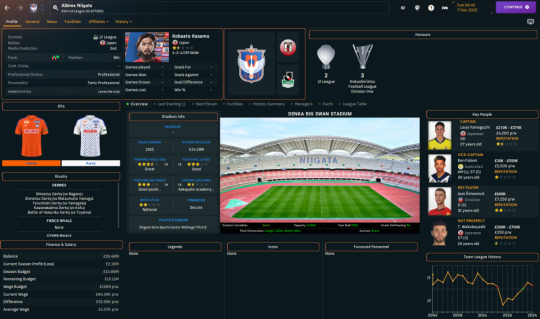
View On WordPress
#Albirex Niigata#Atsutaka Izutsu#Denka Big Swan Stadium#FM24#Football Manager#Football Manager 2024#Football Manager 24#J2 League#Japan#Jarl-Emil Nesland#Junpei Mizuguchi#Junya Suzuki#Keita Fujimura#Robaato Rasamu#Ryo Murakami#Ryuji Takahashi#Shunsuke Mito#Takahashi Wakabayashi#Takumi Takahashi#Victor Wanyama#Vusi More#Yuito Suzuki#Yuta Maeda
0 notes
Text
#The iDOLM@STER#Haruka Amami#Eriko Nakamura#Chihaya Kisaragi#Asami Imai#Yukiho Hagiwara#Azumi Asakura#Iori Minase#Rie Kugimiya#Azusa Miura#Chiaki Takahashi#Hibiki Ganaha#Manami Numakura#Ritsuko Akizuki#Naomi Wakabayashi
6 notes
·
View notes
Text
Jumputi Series #14: Captain Tsubasa
A sports manga written and illustrated by Yōichi Takahashi. The series is known to have been an inspiration for many Football players over the years.
Synopsis - The manga follows the growth of Tsubasa Ozora, an 11-year old elementary school student who has a deep love for Football and dreams of one day winning the World Cup for Japan.
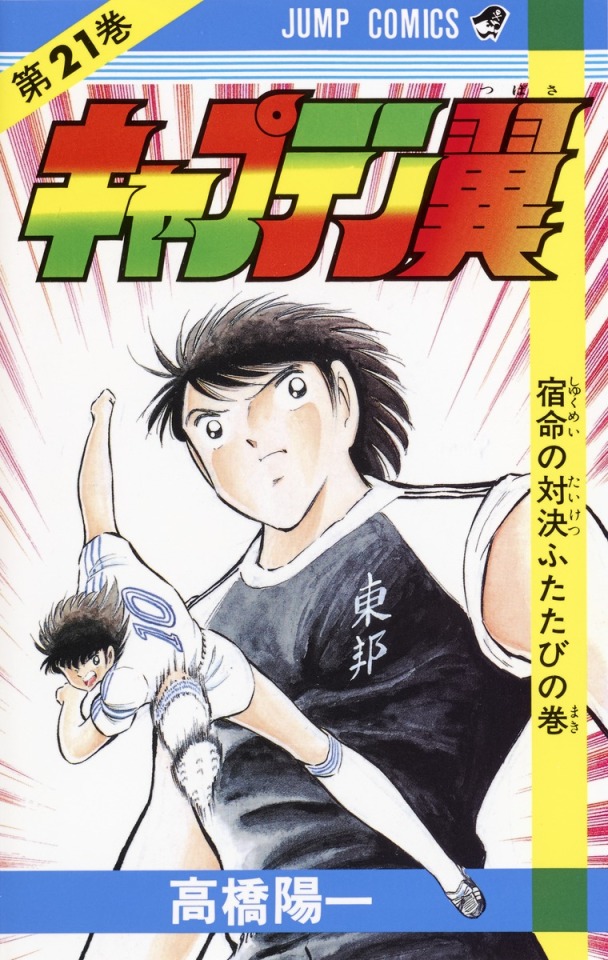
Characters:
Tsubasa Ozora - Tsubasa 's life was saved by his football in a road-traffic accident when he was barely able to walk, which has shaped his love for Football. Tsubasa works his way to becoming one of the most prodigious players in Japan, taking his city's team to the national championship and winning, then years later winning a small Jr. Youth International Tournament.
Taro Misaki - The other half of what is called Japan's "Golden Duo" with Tsubasa, the two met in elementary school at Nankatsu. Before moving to Nankatsu, he had traveled around because of his father's work, having played with teams that would become rivals to Tsubasa.
Genzo Wakabayashi - Often called Japan's best goalkeeper, the day Tsubasa arrived in Nankatsu, he challenged Wakabayashi to a duel. After beating him, the two became rivals and then eventually played on the same team. Wakabayashi becomes a source of support for Tsubasa, playing as goalkeeper for his first National Championship win. It is not long after, however, that Genzo travels to Germany to train even harder. He would rejoin Tsubasa during the Jr. Youth International Tournament as part of Japan's team.
Kojiro Hyuga - One of Tsubasa's biggest rivals during the National Championship, he led Team Toho. He was dubbed "Fierce Tiger" because of his fierceness and ruthlessness on the Football field which contrasted with Tsubasa's mindset heavily. It is in Nankatsu and Toho's final match against each other that Kojiro develops a respect for Tsubasa as the match ends in a tie.
Karl-Heinz Schneider - Dubbed the "Young Emperor" he is the captain and ace striker for the German national team and one of Genzo Wakabayashi's greatest rivals, being able to score a goal at him outside the penalty area. The first faced off while Genzo was in Germany as the two played for separate Football Clubs. He's the captain of the West Germany team in the Jr. Youth International Tournament, defeating Canada, Portugal and Uruguay, scoring a hat-trick in all three matches. He faces off against Wakabayashi in the finals against Japan, but despite scoring two goals, Japan wins the tournament.
This series was added to the game in a New Heroes Gacha on 11/09/2018
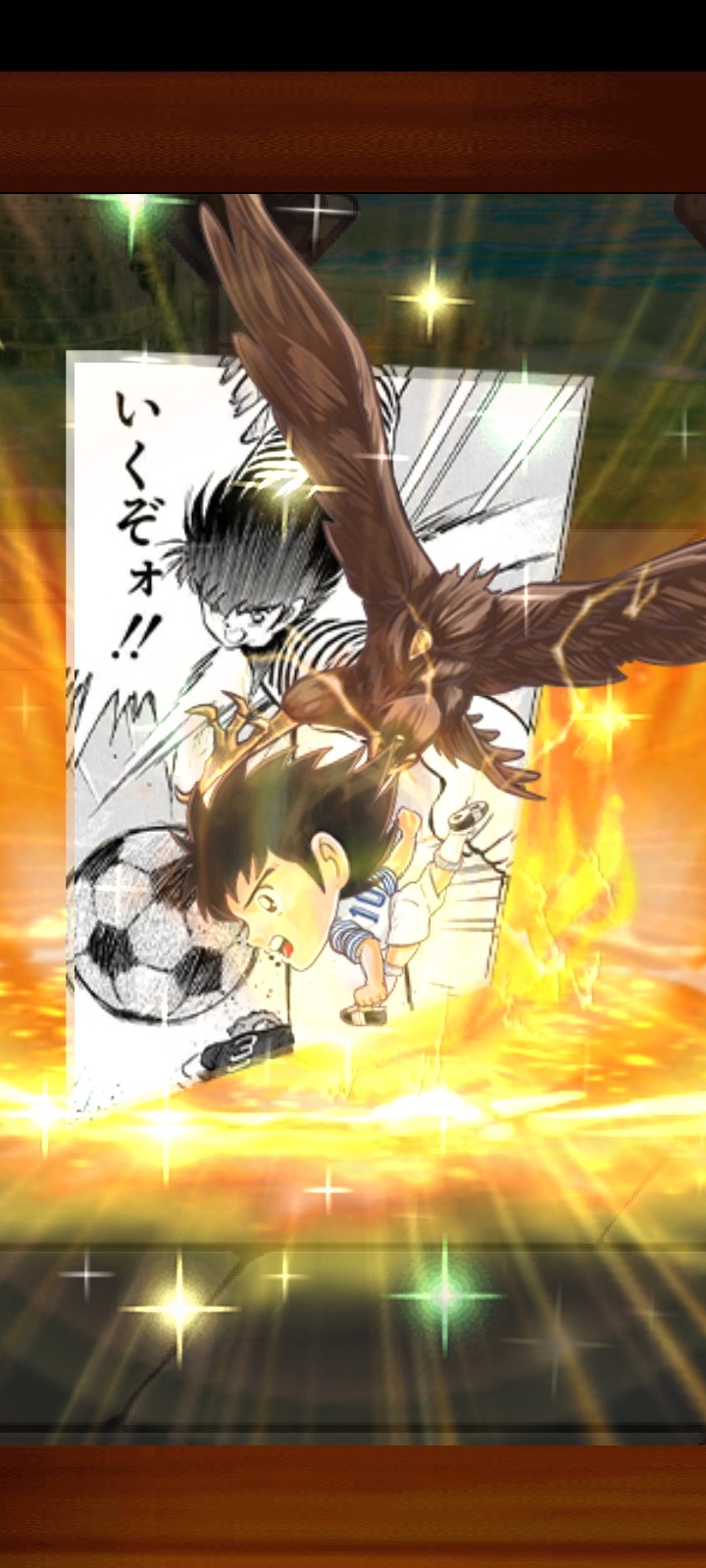




#weekly shonen jump#jumputi heroes#ジャンプ#Captain Tsubasa#tsubasa ozora#genzo wakabayashi#kojiro hyuga
1 note
·
View note
Photo



“NEXT DREAM” - SEQUEL to Rising Sun arc by Takahashi-sensei. CONFIRMED!!!
An interview today -September 30th- with Takahashi-sensei just validated the assessment I made 3 days ago centering on "NEXT DREAM" being the OFFICIAL SEQUEL to Rising Sun arc.
(◕‿◕) ♡
高橋:CLの構想は2000年ごろからありました。もともと『キャプテン翼 ROAD TO 2002』(2001~2004年連載)では、翼がバルセロナに入団し、クラシコで戦うところまでしか描けませんでしたが、翼が欧州に挑戦したのならば、黄金世代の岬や石崎了、三杉淳といったメンバーも、彼の後を追って欧州クラブに移籍するだろうとは想像していました。2014年から『キャプテン翼 ライジングサン』でオリンピックの話を描き始め、その後に欧州での黄金世代を描こうと考えていたのですが、なかなかオリンピックが終わらず、漫画で描くとなるとだいぶ先になってしまう。僕の年齢からしても、すべて描き切るのは難しいという思いもあり、だったらゲームの中で展開していくのがいいんじゃないかと考えました。
Takahashi’s official confirmation: The concept of Champions League has been in my mind since 2000. Originally, in "Captain Tsubasa ROAD TO 2002" (serialized from 2001 to 2004), I could only draw Tsubasa joining Barcelona and fighting in El Clásico, but if Tsubasa could challenge Europe, members of the Golden Generation in my imagination such as Misaki, Ishizaki Ryo and Misugi Jun would follow him and join European clubs. I started drawing the story of the Olympic Games with "Captain Tsubasa Rising Sun" in 2014, and after that I was thinking of drawing the Golden Generation in Europe, but the Olympics haven't ended yet, and when it comes to drawing manga, it's still a long way off. Even at my age (61), I thought it would be difficult to draw everything, so I believed it would be better for me to develop it in this game (a.k.a Captain Tsubasa: Dream Team).
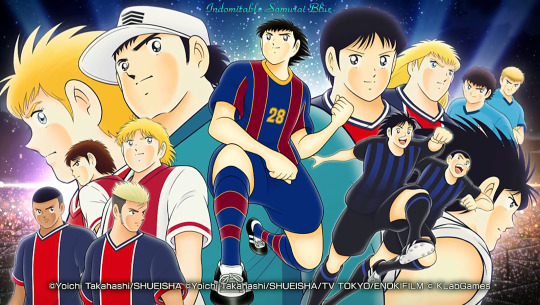
⚡️⚡️ Original Japanese Ver. ⚡️⚡️
>>> LINK <<<
🌼 Understandable English Ver. 🌼
>>> LINK <<<
—
Heads up, folks! "NEXT DREAM" is finally confirmed to be the Authentic Story written by Takahashi-sensei himself.
The highlight of this month is GERMAN BUNDESLIGA:

■ Genzo Wakabayashi signs for Bayern Munich.
■ New rivals / secondary characters such as Shun Nitta joins Borussia Dortmund whereas Makoto Soda plays for Werder Bremen.
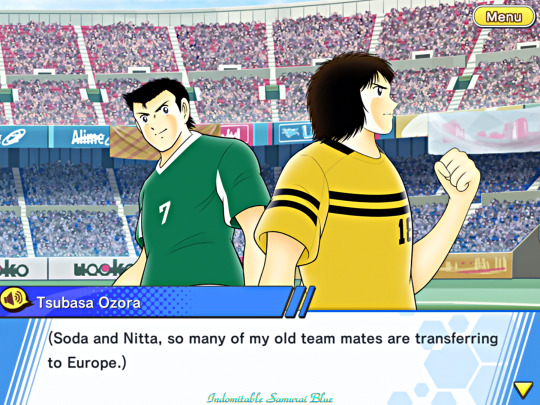
While we are super hyped waiting for "NEXT DREAM" to unfold each month, the outlook of the UEFA arc being materialized on paper after Rising Sun is rather... bleak. 💔💔💔💔💔💔💔💔💔
Dear Takahashi-sensei,
In this age, you have touched the lives of so many generations. We wish you more great achievements in the years to come and the best of everything because you deserve it. You are truly an inspiration! 🌈🌈🌈🌈🌈
——
**Character Artworks © Takahashi Yoichi and Captain Tsubasa: Dream Team.
**Wallpapers Creator & Editor: ME - SamuraiSpirit365 a.k.a Indomitable Samurai Blue.
—
++ Related Topics ++
1/ "NEXT DREAM" - SEQUEL to Rising Sun arc
2/ "NEXT DREAM" by Yoichi Takahashi to APPEAR in Captain Tsubasa: Dream Team
3/ PATHWAY TO GLORY II
4/ PATHWAY TO GLORY I
5/ FIGHT!!! INVINCIBLE WARRING WARRIORS OF THE RISING SUN
—
==>>> Click on the Images and Open them in New Tab for HD Quality. ;)
#captain tsubasa#tsubasa ozora#jun misugi#genzo wakabayashi#taro misaki#kojiro hyuga#shingo aoi#u23 japan#captain tsubasa rising sun#captain tsubasa dream team#キャプテン翼#C翼#takahashi yoichi#高橋 陽一#キャプテン翼ライジングサン#たたかえドリームチーム#sequel#uefa#champions league
50 notes
·
View notes
Photo





Cinderella Girls Theater Episode 1084- Special Training to Express Yourself!
#tomoka wakabayashi#shiho makihara#reiko takahashi#miyabi tsukimiya#arisu tachibana#idolm@ster#idolm@ster cinderella girls#cg theater#comic#long post
19 notes
·
View notes